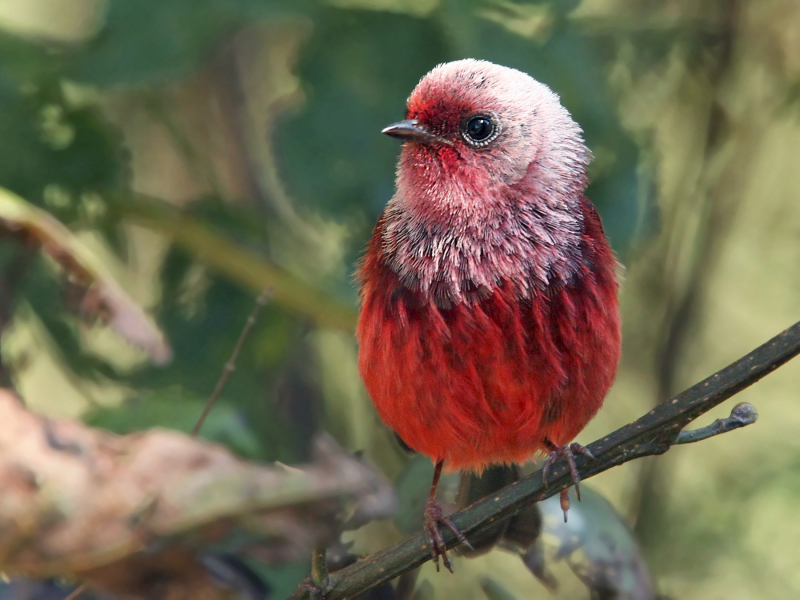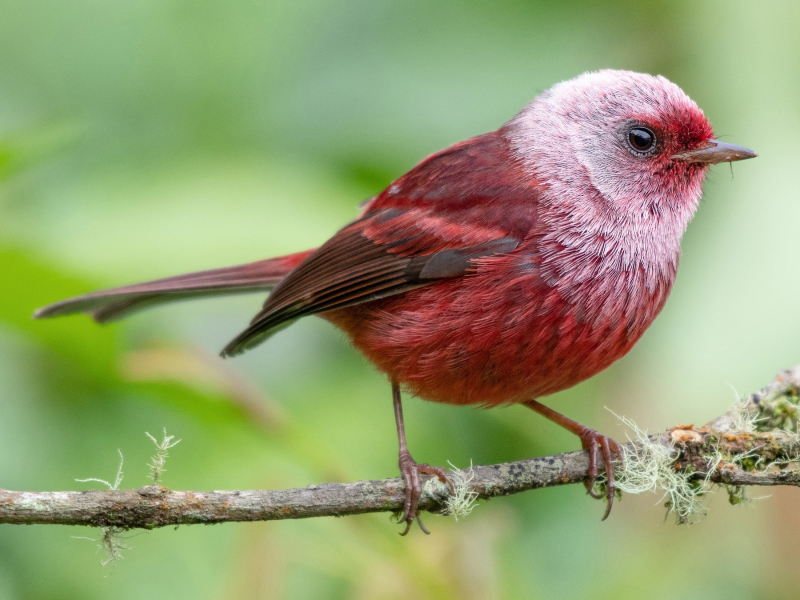Pink-Headed Warbler

The Pink-headed Warbler (Cardellina versicolor) is a small passerine bird found in the southwestern highlands of Guatemala and the central and southeastern highlands of the Mexican state of Chiapas. Like other New World warblers, the pink-headed warbler is an insectivore, gleaning insects and other invertebrates from vegetation (primarily in dense understory) and making aerial sallies after flying prey. It typically forages between 2–5 m off the ground, seldom foraging above 7 m — except during the breeding season, when the male may hunt near the tops of trees from which it sings, as high as 15 m up.
The pink-headed warbler weighs 10 g and is 12.5–13.5 cm long. Although the plumage of the two sexes is identical, females tend to be a little bit duller overall. The adult's upper parts are dark red, its chest is silvery-pink, and its underparts are pinkish-red. With a reddish forehead, darkish lores, and dark brown eyes, it has a silvery-pink head. Its legs are flesh-colored, and its bill is somewhat blackish, occasionally displaying some horn color on the lower mandible. The underparts of the juvenile are a paler, richer brown color. But that feathering quickly molts away. By the end of the summer, juvenile birds can only be distinguished from adults by their unossified skulls.











